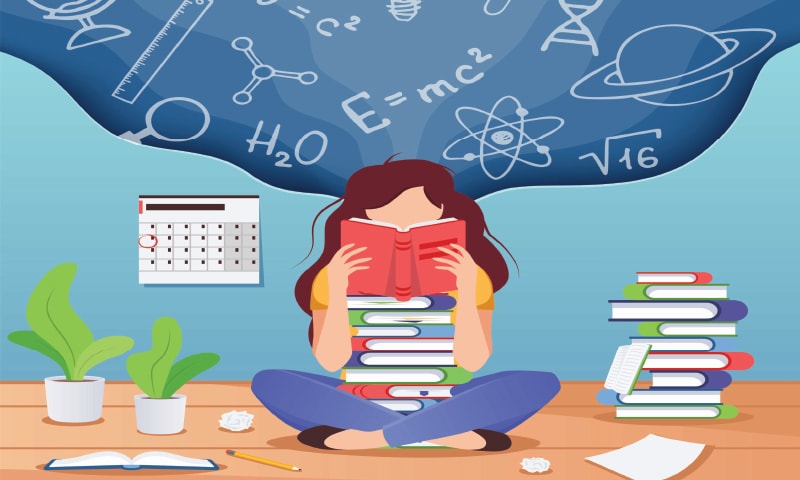Exams can be stressful, but with the right strategies, they don’t have to be overwhelming. The key to exam success isn’t just studying hard—it’s studying smart. Whether you’re a high school student, college learner, or preparing for a major certification, these proven techniques will help you retain information, boost focus, and perform your best when it counts most.
Here are the Best Study Techniques for Exam Success in 2025:
1. Active Recall – The Ultimate Memory Booster
What it is: Actively trying to remember information instead of passively re-reading notes.
🧠 Why it works: It strengthens neural connections, making information easier to recall later. Studies show it’s more effective than highlighting or rereading.
✅ How to use it:
- After reading a chapter, close the book and write down everything you remember.
- Use flashcards (apps like Anki or Quizlet are great) to quiz yourself regularly.
2. Spaced Repetition – Master Long-Term Retention
What it is: Reviewing material over increasing intervals of time.
🧠 Why it works: It leverages the “forgetting curve” and ensures that information stays in your long-term memory.
✅ How to use it:
- Review new concepts 1 day later, then 3 days, then 7 days, etc.
- Use apps like Anki, RemNote, or Brainscape to automate the process.
3. The Pomodoro Technique – Study in Focused Sprints
What it is: A time management method using short, focused study intervals (usually 25 minutes), followed by short breaks.
🧠 Why it works: It keeps your brain fresh and focused while preventing burnout.
✅ How to use it:
- Study for 25 minutes, then take a 5-minute break.
- After 4 cycles, take a longer 20–30 minute break.
- Apps like Focus To-Do, Forest, or Pomofocus make it easy.
4. Interleaving – Mix Up Subjects for Better Learning
What it is: Instead of studying one subject for hours (blocked learning), you mix different topics or types of problems.
🧠 Why it works: It trains your brain to switch between topics and apply knowledge more flexibly, which is exactly what you need during exams.
✅ How to use it:
- Study math, then science, then history in short intervals.
- When practicing problems, alternate between different types.
5. Mind Mapping – Visualize Your Knowledge
What it is: A diagram that organizes information around a central concept, branching into related topics.
🧠 Why it works: It enhances memory by engaging visual and logical parts of the brain.
✅ How to use it:
- Start with a central idea in the middle (e.g., “Photosynthesis”) and draw branches for subtopics.
- Tools like XMind, MindMeister, or simply pen and paper work great.
6. Teaching Method (Feynman Technique) – Learn by Explaining
What it is: Teaching a concept in simple language as if explaining it to someone else.
🧠 Why it works: Forces you to truly understand the material, not just memorize it.
✅ How to use it:
- Write or say the concept aloud in simple terms.
- Identify any gaps in understanding, revisit the topic, and try again.
7. Study Environment Optimization – Set the Scene for Success
What it is: Creating a distraction-free, efficient workspace tailored to your learning style.
🧠 Why it works: A clean, focused environment minimizes distractions and boosts productivity.
✅ How to use it:
- Eliminate phone distractions with apps like Freedom or Cold Turkey.
- Use noise-cancelling headphones or ambient music (e.g., lofi beats or brain.fm) to improve focus.
8. Practice Testing – Train Like You’re Taking the Exam
What it is: Taking practice quizzes and past papers under test conditions.
🧠 Why it works: Helps you get used to time pressure and identify weak areas.
✅ How to use it:
- Use official practice exams or create your own quizzes.
- Simulate the test environment (no notes, timer on, quiet room).
9. Chunking – Break Down Big Ideas
What it is: Grouping related information into “chunks” to make it easier to process.
🧠 Why it works: Your brain remembers chunks of data more efficiently than isolated facts.
✅ How to use it:
- Instead of memorizing a full timeline, group events into categories or themes.
- Use acronyms or mnemonic devices to create memory shortcuts.
10. Wellness & Balance – Don’t Ignore Your Brain’s Needs
What it is: Prioritizing sleep, nutrition, hydration, and mental health as part of your study plan.
🧠 Why it works: A well-rested, well-nourished brain is significantly more effective at learning and problem-solving.
✅ How to use it:
- Get at least 7–8 hours of sleep, especially before exams.
- Stay hydrated, eat brain-boosting foods (like nuts, berries, and fish), and take breaks to walk or stretch.
- Use wellness apps like Calm, Fabulous, or Headspace to reduce stress.
Final Tips for Exam Success
✔️ Start early — cramming is the enemy of long-term retention.
✔️ Create a study schedule and stick to it.
✔️ Review your mistakes and understand why they happened.
✔️ Stay positive and visualize your success—mindset matters more than you think.

